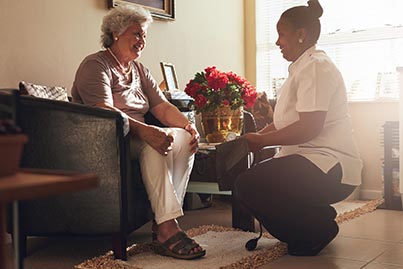The Elms Blog
Safety Tips For Freezing Temperatures, Ice & Snow
Baby, it’s cold outside! Did you know that more people suffer serious injury every year from cold temperatures than during heat waves? According to the Centers for Disease Control and Prevention, cold temperatures can be deadly. Older folks and those with chronic medical conditions are at the highest risk during cold snaps.
Freezing temperatures can affect your heart and lungs and even young or healthy people can develop hypothermia or frostbite. We highly recommend staying indoors, preferably by the fire with a good book! But if you must venture outdoors:
Wear warm clothing. Dressing in layers is ideal, because the air between them traps body heat and acts as insulation. Be sure clothing is dry and try to cover all exposed skin, especially your fingertips, nose, and earlobes. Your outer layer should be windproof and be sure to wear a hat to limit heat loss. A scarf that covers your nose and mouth should do the trick if you have trouble breathing in cold weather. Your footwear should be warm and waterproof. Rubber soles that provide traction in ice and snow are ideal.
When you’re exposed to freezing temperatures, your body must work harder to maintain its temperature of 98.6°F. Your heart must work a little harder even when you’re standing still. Shoveling is a particularly intense cardiovascular workout. If you have heart disease, or if you’re out of shape, you may need to take frequent breaks when shoveling.
Remember that when the temperature goes below 32°F, water will freeze, so sidewalks may become icy. Keep ice melt on hand and keep walkways safe.
It’s also important to ensure that walkways are well lit, as the sun sets earlier in the winter and can create many hard-to-see hazards, like black ice.
Frostbite occurs when your skin freezes. It’s most common on extremities (like fingers, nose and toes) and exposed skin like cheeks. The first sign is redness and pain.
Hypothermia happens when your body’s core temperature begins to drop. Because your temperature drops gradually, symptoms start slowly. The first sign of hypothermia is shivering; other signs include dizziness, confusion, shallow breathing, and trouble speaking.
If possible, go inside when you start to shiver, but at the very least put on another layer, and be sure your clothes (especially socks and mittens or gloves) are dry.
If you are caring for a Family member or a friend, we hope these tips help!
We would love to show you what ’boutique senior living’ is all about at The Elms. If you would like to speak directly to one of our friendly and helpful staff to set up a private tour, please call (401) 596-4630.
Providing Safe, Comfortable, and Empowered Lifestyles
Enjoy the charm of victorian architecture, spacious and relaxing community rooms and outdoor spaces, a vibrant and historic downtown and local community, and award-winning care that is always close at hand.


